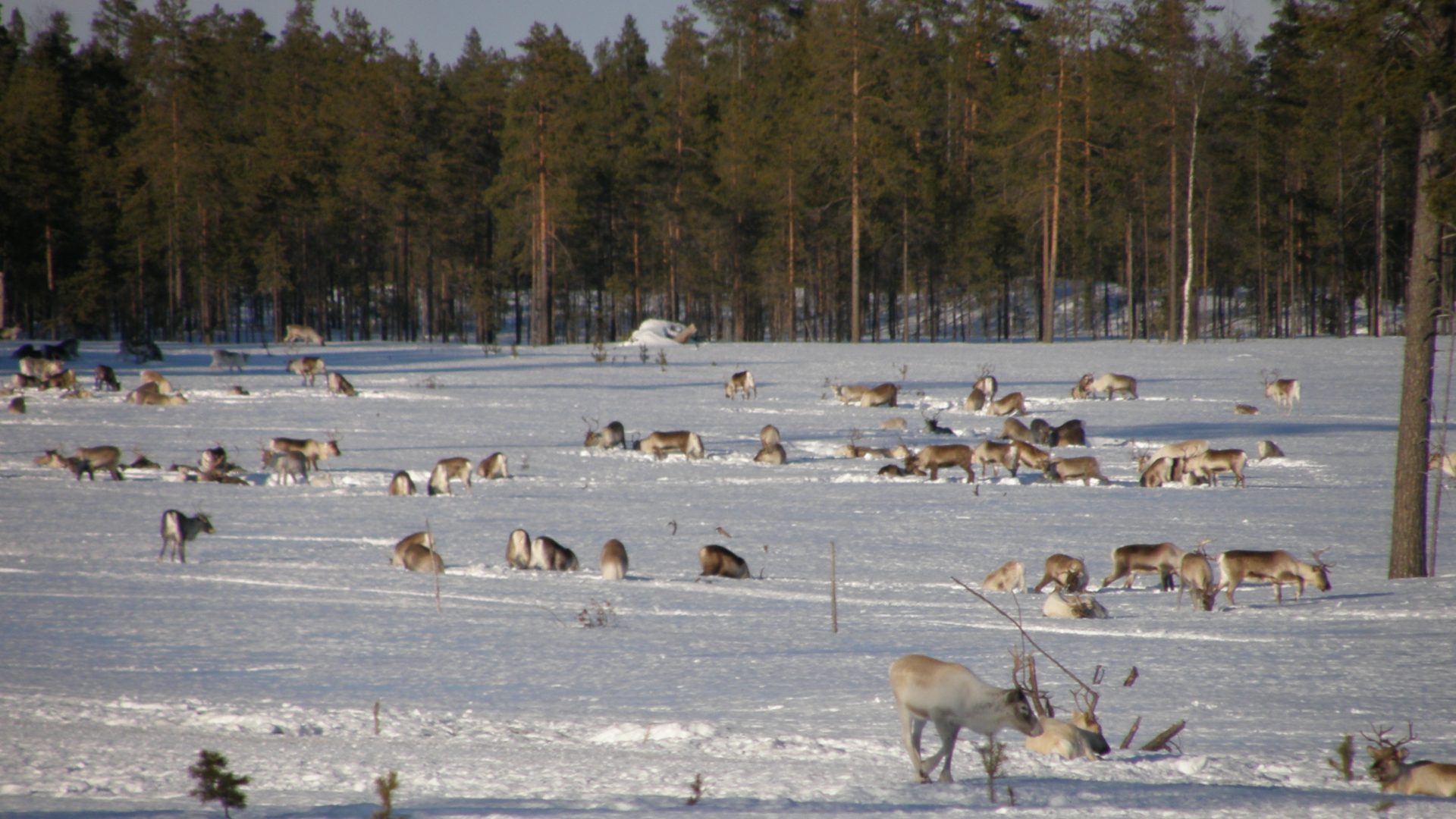The way a forest is managed is an active choice. Researchers have shown, based on “real-world” data combined with the use of an advanced forest decision support system, that forestry that follows the recommendations of the Swedish Forestry Act yields higher economic revenues than forestry that is adapted to reindeer husbandry requirements. But is this how we should evaluate forestry?
The National Association of Swedish Sámi has published guidelines for forestry adapted to reindeer husbandry. Based on these guidelines, researchers have created a “reindeer scenario” with adaptations of forest management. The long-term outcome and consequences have been compared to a “timber scenario” based on guidelines from the Swedish Forestry Act and the Forest Stewardship Council (FSC).
The study area for the comparison is comprised of land within two Sámi herding districts, Vilhelmina Norra and Sirges. The reindeer scenario resulted in less dense forest and longer rotation times (the time between plantation and harvesting), with older and larger trees. However, the larger trees did not compensate for the loss of growth due to the lower density of the forests. Over a period of 100 years, the harvesting possibilities of the reindeer scenario are approximately 80% those of the timber scenario in both areas.
Longer ecological cycles
In Sirges, the reindeer scenario rendered rotation times that were 24 years longer than in the timber scenario (137 vs. 113 years); in Vilhelmina the difference was 21 years (124 vs. 103 years). In the reindeer scenario, lichen-rich forest covered about 50-60% of the area in forest older than 120 years. In both scenarios, old forest (older than 120 years) increased and had the same share after 100 years. However, the increase of old forest is faster in the reindeer scenario.
The comparison between the two scenarios demonstrates the difficulty involved in finding a compromise when different stakeholders all use and depend on the same land. Different interests are placed head-to-head, for example decreasing income for forestry versus growing costs for the adaptation of reindeer husbandry to modern forestry. However, reindeer husbandry is much more than a meat-producing industry; it is both a livelihood and a central carrier of culture for the Sámi population, which makes it impossible to simply measure its value in strict economic terms.
Include more perspectives
Since this is such a complex question, the researchers behind the study emphasize the need to include more perspectives when conducting analyses. For example, different management strategies such as selective harvesting could be included in closer examinations of the costs and benefits for all land users. Selective harvesting might be able to increase the variation in the landscape, with more coherent grazing land. In the long term, such variation may create a buffer that could benefit the reindeer when grazing conditions are harsh due to variations in nature.
Facts
Horstkotte, T., Lind, T. & Moen, J. (2016) Quantifying the Implications of Different Land Users’ Priorities in the Management of Boreal Multiple-Use Forests. Environmental Management 57, 770-783.
The article is written with support of research grant from Formas awarded to Jon Moen.
Photo: Erik Valinger.

